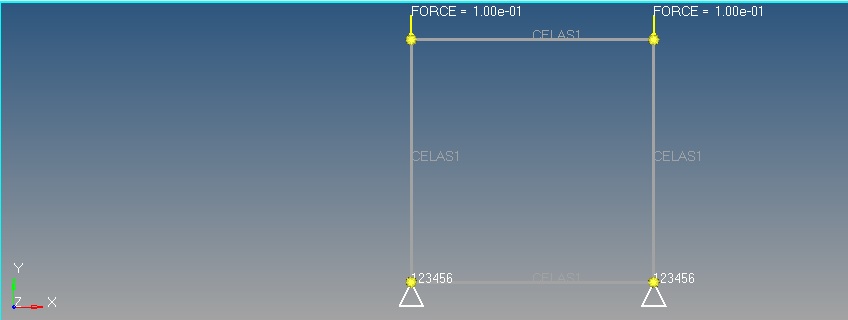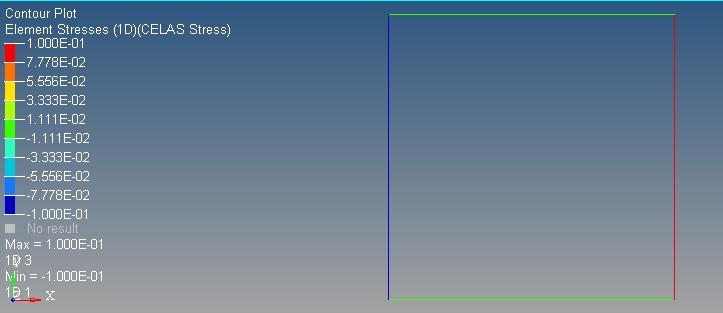Hi,
I'm trying a basic analysis using a 1D spring element to study its effects under compression(image:loading conditions) and tension.
K= 0.1
GE= 0.5
S= 1
The values are arbitrary as this is just a benchmark test. Could someone please look at the attached images. I would think instead of there being a blue and red line. The 1D elements both should be of the same magnitude and direction. Thus depicted in red. I'm not understanding why there is a negative stress value on one side and positive on the other side.
Thank You
Shishir
<?xml version="1.0" encoding="UTF-8"?>
<?xml version="1.0" encoding="UTF-8"?>